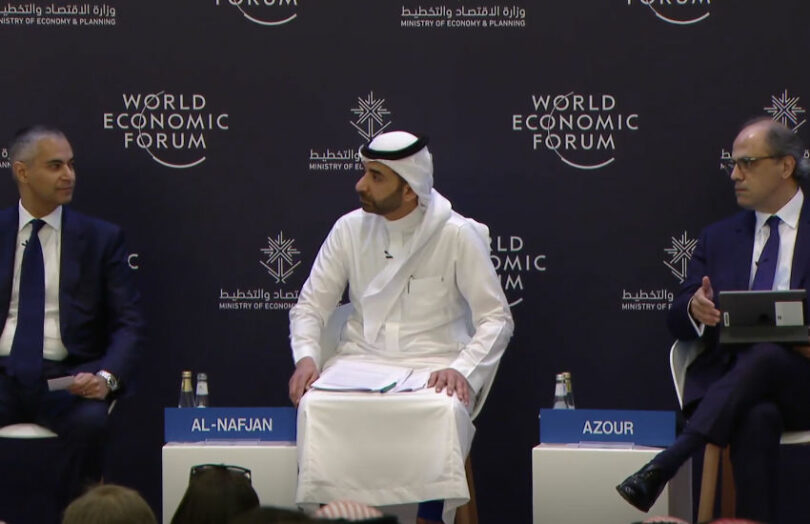Last week the World Economic Forum (WEF) held a Middle East Special Meeting, during which central bank digital currency (CBDC) was discussed. Cross border CBDC is a priority for both the Saudi and Bahraini central banks. In contrast, the International Monetary Fund (IMF) sees potential for a retail CBDC to improve financial inclusion. The Governor of the Bank of Bahrain also hypothesized about the attractions of an interest bearing retail CBDC.
IMF sees CBDC as contributing to financial inclusion
Jihad Azour, the IMF Director for Middle East and Central Asia (MECA), sees a huge opportunity for CBDC given the low rate of digital payments in MECA (40%) compared to South East Asia (80%). There’s great potential because the region also has a very high rate of telecom and internet penetration.
However, he also noted the tremendous disparity between countries. A recent IMF CBDC report about the region shows that the Gulf Cooperation Council countries – including Saudi Arabia and Bahrain – have a far higher digital payment rate of around 75%.
The deputy Governor of the Saudia Arabian Monetary Authority (SAMA), Yazeed Al-Nafjan, said the digital payment rate in Saudi increased from 62% in 2022 to 70% in 2023.
Saudi eyes mBridge for cross border CBDC
For that reason, SAMA sees no reason to adopt a retail CBDC. However, it is interested in a cross border CBDC. SAMA is an observer of mBridge, the project that currently includes the central banks of China, Hong Kong, Thailand and the UAE. It hopes to become a full member. SAMA is particularly interested in learning about the different design choices and policy implications. SAMA’s first cross border CBDC initiative was Project Aber with the UAE during 2021.
mBridge adopts the single platform model, one of three potential models for cross border CBDC outlined by the Bank for International Settlements (BIS) in 2021. The other options involve creating compatible CBDCs and interlinking domestic CBDC systems.
Mr Al-Nafjan noted that there was not yet a consensus on which model is optimal, so experimentation should continue.
On the one hand, Hong Kong has said that mBridge would launch a minimum viable product (MVP) mid year. The project coordinator, the BIS, is quite conservative regarding its launch expectations, and Mr Al-Nafjan said it was difficult to say when the experimentation would end. He doesn’t see any first mover advantage so he is keen to ensure that any launch is well coordinated.
Bahrain views retail CBDC as a monetary policy instrument
Khalid Humaidan, the Governor of the Central Bank of Bahrain, concurred with Saudi that cross border CBDC is the most important aspect. That’s partly because Bahrain has a large expat worker base that remits money back home with Bahrainis making up less than half of the residents. Like Saudi, Bahrain is also an official observer of the mBridge project.
Despite the focus on a wholesale cross border CBDC, Governor Humaidan finds the prospect of an interest bearing retail CBDC appealing, although we believe he was talking hypothetically.
“Imagine we start introducing an interest rate to a central bank digital currency. It starts to look very much like we’ve securitized a money market fund. That could be something very powerful,” said the Governor.
“The central bank (would have) introduced a new monetary policy tool that’s more direct in nature than what we currently have.”
Today when the central bank adjusts interest rates, it relies on banks to pass on the rate change. With an interest bearing CBDC that would not be the case. He suggested that with a direct transmission mechanism interest rate adjustments could be smaller, benefiting the economy.
Of course this would compete with bank deposits. However, he argued that digitalization would create many opportunities for innovation.
Meanwhile, the topic of CBDC and bank disintermediation is being explored around the world, but especially in the EU. The Bundesbank recently published a survey and model.






